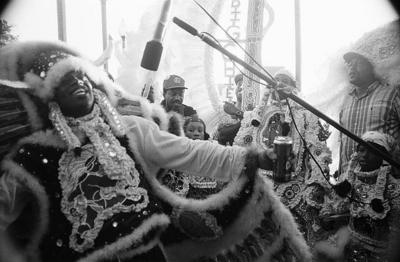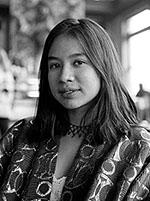Luck of the Land
Last night I got scolded for going downstairs to publish this blog at 4:30 in the morning. "Sweetheart, I can't have you coming down here at this hour. We're under marshall law and crime is rampant. You know that side of St. Claude used to be bad and it's even worse now. They're all just holed up in abandoned houses. I had to kick out a bunch of crack heads hanging out on the benches earlier tonight. We try our best to maintain a sense of normalacy around here, but it's hard. The National Guard is just one block away."
At that hour even the criminals are asleep. But I accepted my scolding and will hold off on publishing at all hours of the night. There must be so much that I'm not seeing during my brief stay. Given time, I'm sure my enthusiasm would be tempered by the reality of the situation. But still, I see signs of hope everywhere I look.
Nonetheless, today was a sobering experience. I went back to my old high school on the lakefront. The water damage was apparent and the whole first floor of the school is still shut down one year later. The field where I used to eat lunch and play hackey sack was devastated. The school was making great strides to continue business as usual, but things were definitely not usual.
I drove to my old neighborhood a few blocks away, just over the levee. Half the bridge was closed and I started to worry as I took a detour to get to my street, then saw tractors and trash littering the levee. Miraculously enough, 1711 Jay Street--the house I lived in with my mother all through high school--was fine, but a few blocks away the damage was intense. PJ's on the lakefront, where I used to hang out after school, was completely devastated. The water lines were well above my head and that's just where the water settled. The whole shopping center was gutted, and the gas station across the street, the apartment buildings and all the single family homes in that part of the neighborhood were destroyed. Most of the houses were abandoned, but a few brave families were camping out in trailers attached to what used to be there homes.
The storm was capricious, knocking out a street here and a street there, and leaving others almost untouched. The fortunes of thousands of people were laid out in the silent geography, the luck of the land. In mid-city, a whole neighborhood that sits on a ridge was spared, while all the houses below were destroyed. No one even knew about the ridge before the storm. Now every one refers to it as mid-city ridge--they were the lucky ones. I'm willing to bet the housing prices there have skyrocketed. The contours of the land, which were once invisible to its inhabitants, are now obvious.
Craig, the security guard assigned to an ATM machine plopped down in this abandoned shopping center in this wrecked neighborhood was happy for the company. "Don't believe what you heard in the media. This was a category 5 storm. There was sustained winds of 175 mph easy and gusts up to 2 and a quarter. It was the gusts that blew the trees down and the poles, that ripped off the roofs." Craig now lives in a houseboat a few miles away to cut the commute time. He has been assigned to patrol private property all over the state since the hurricane hit.
I drive down to the lake and am happy to see the same old sight: families fishing, artists sketching the scene, birds swarming over the lake and fish jumping in the twilight. The trees are held up with wooden braces, the levees are fortified with corrugated iron, and giant pumps are still installed in the bayou. But other than that, the lake looks peaceful and seems to have gone back to being a companion to the people of the city. New Orleans is the Crescent City because of its relationship to this lake, which gives and takes in cycles that have gone on since this city was first built.





